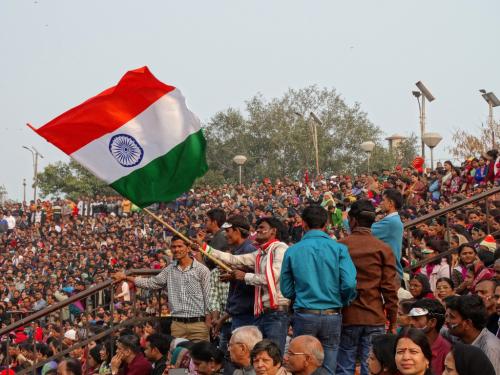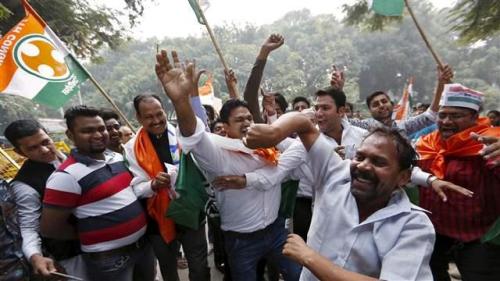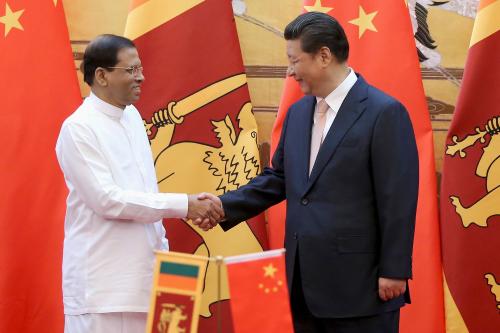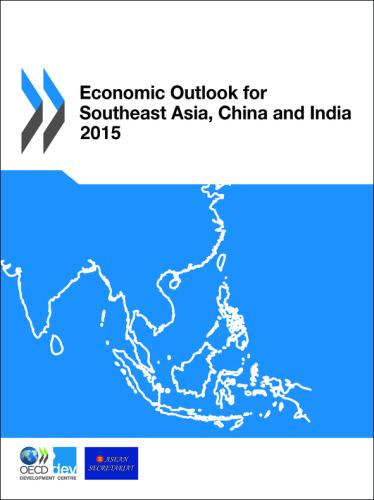Content from the Brookings Institution India Center is now archived. After seven years of an impactful partnership, as of September 11, 2020, Brookings India is now the Centre for Social and Economic Progress, an independent public policy institution based in India.
Last year Indians went to the polls to elect a man who had risen to power on the back of cultural revivalism within the Hindu nationalist Bharatiya Janata Party (BJP). Narendra Modi’s election win was, however, also a result of energetic pragmatism. These two themes – culture and pragmatism – have since combined successfully in his foreign policy, particularly in Asia. Culture has been used as a soft power tool with which to achieve interests and has been one of the areas where Modi has distinguished himself from previous administrations.
Under the banner of India’s ‘Look East’/’Act East’ policy, Modi has used culture to appeal to the peoples of Asia. Much of this has been through Buddhism, which more than any other region or philosophy connects all of Asia. This year, India hosted the International Buddha Poornima Diwas, a global celebration of Buddha’s birth, enlightenment and passing. The decision to host was initiated by Modi who led the prayers on the day. Modi stated “without Buddha this century cannot be Asia’s century”. India’s home ministry announced that there would be a government sponsored annual celebration of the anniversary. The government also plans to establish a centre for Buddhist worship and learning in New Delhi. Thus, Modi’s government is trying to promote India as the spiritual birthplace of Buddhism and home of the Buddha (though he was born in present day Nepal). The utilization of Buddhism does not necessarily contradict Hindutva ideology, which seeks to protect and promote all that is deemed Indian heritage, including Buddhism, Jainism and Sikhism.
One of New Delhi’s aims with Buddhism is to neutralize any Chinese soft power advantage. China’s foreign ministry has recently sought to elevate Buddhism’s role as a foreign policy tool. Beijing has the benefit and cache of having the world’s largest Buddhist population and is said to be undergoing a Buddhist renaissance under President Xi Jinping. India only has a small number of Buddhists, many from poorer sections of society.
Download the Complete Briefing Book
Alongside this competition for influence throughout the rest of Asia, culture is also being used by New Delhi and Beijing to appeal to each other’s populations and smoothen ties. Bilateral initiatives, like the ‘cultural parks’ planned for Bengaluru and Beijing are underway. While the influence of culture is somewhat stunted by competing strategic interests in India’s neighborhood, China’s neighborhood, along the shared disputed border, the Indian Ocean, and in the economic arena, New Delhi has greater cultural ties with Beijing than with any other great power. India and China are unique in that, as nation states, they constitute some of the oldest continuous cultural traditions in the world.
Culture as a bridge has thus far seen more effort from China than India, as evident in Beijing’s cultural emphasis during Modi’s recent visit. China feels the need to work harder to woo the Indian public than vice-versa. This is partly because it wishes to prevent India being used as an anti-China ally by the United States and seeks to entice India to join its ‘One Belt, One Road’ initiative.
India may have an advantage (if carefully managed) because the cultural influence has flowed mainly in one direction. A favored quote amongst Indians is that by Chinese ambassador and philosopher, Hu Shih: “India conquered and dominated China culturally for 20 centuries without ever having to send a single soldier across her border”; it was Indian Buddhism that helped shape Chinese civilization. It is this age-old soft power that Modi must tap into, whilst avoiding the hubris that comes with it. Humility in promoting Indian culture is particularly important in Asia where a lack of it has worked against India’s diplomats in the past. This is even more important for Modi as the BJP’s nationalism leaves it more open to allegations of chauvinism than pervious Congress-led governments.
While China has been helping build and preserve monasteries in Burma, Thailand, and Cambodia, Modi visited Buddhist monasteries during his trips to Japan, South Korea and Mongolia where, like for other Asian countries, he gifted a sapling of the sacred Bodhi tree. India can compete through highlighting not only Buddhism, but also Hinduism and Sanskrit as its ancient ties to the region. The largest and most influential ASEAN member, Indonesia, has a language influenced by Sanskrit, a coat of arms containing the ‘Garuda’ a bird from Hindu mythology, and boasts notable Buddhist and Hindu temples.
Cultural diplomacy was also deployed in India’s own neighborhood. Buddhism was used to appeal to Bhutan and Nepal. In Kathmandu one of the four ‘Cs’ of Modi’s Nepal visit was culture (a country which also received a Bodhi sapling from the PM). Modi’s efforts perhaps yielded most significant results in Sri Lanka – one of the oldest Buddhist countries. If geopolitical history and strategic and economic interests were the sole determiners of New Delhi’s reputation in the island, India would lag behind China. Modi has managed to reduce this gap in part through appealing to ancient Indo-Lankan Buddhist ties, dating back to the Mauryan Empire, under Ashoka.
Of course culture alone, as we have seen with China, is not enough to alter countries’ policies toward India. It is nevertheless a tool which India, perhaps more than the other great powers, needs to use to buttress its under-resourced foreign policy apparatus. Modi rose to power domestically and fulfilled his political objectives partly because of his appeal to pride in Indian culture. When pursuing national objectives on the world stage, it will be a benefit for all Indians if he can use culture to work that same magic.









Commentary
Op-edModi deploys his culture skills in Asia
IndiaGov@365
June 1, 2015